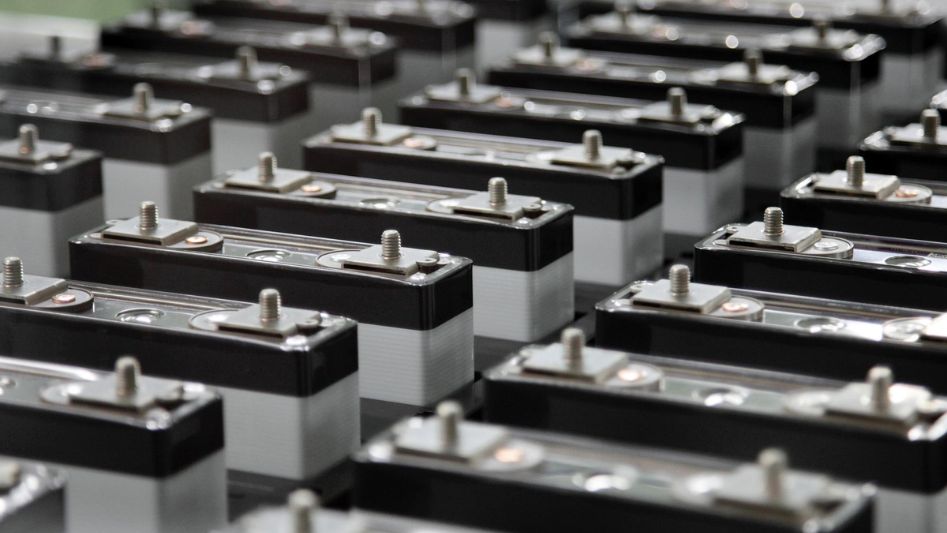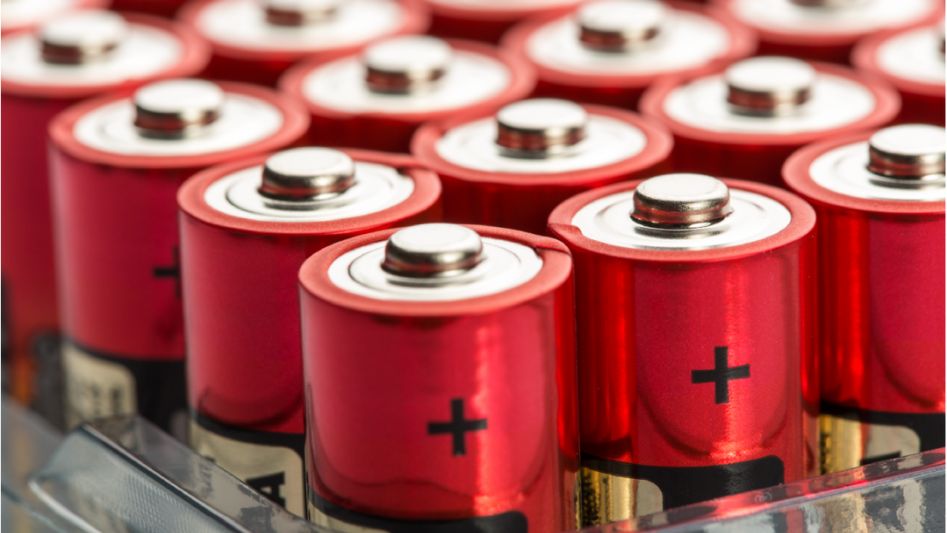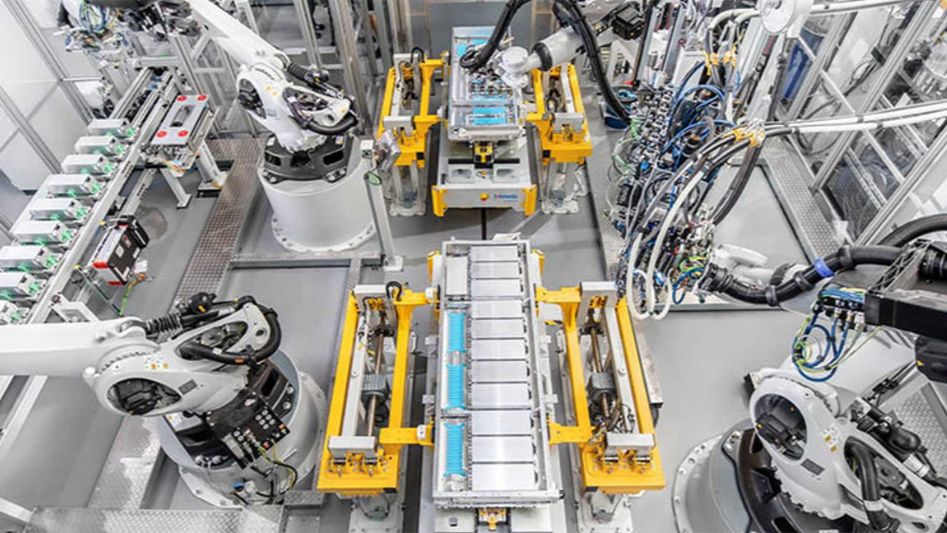Lithium batteries power our laptops, smartphones, and electric vehicles. But we’ve hit a few snags. Find out if the metal can solve those problems.
Table Of Content
As the renewable energy industry expands, so does the demand for more efficient and less expensive energy storage, raising concerns about our increasing reliance on lithium. We still need to find the next big thing to satisfy our demand in all the other use cases, but there are currently a variety of possibilities available today beyond lithium batteries for grid-scale storage, such as compressed air and pumped hydro. Aluminum-based batteries, which don’t require rare-earth minerals, have the potential to be game changers because of their rapid charging speeds, low production costs, and high recycling rates. We need to take a closer look at two recent developments that have the potential to change the world, and the advantages they provide are mind-boggling. Can they actually hold their own against lithium-ion batteries, and how do they function? Allow us to examine this matter at length.
Which begs the question: why do I spend so much time on the channel discussing batteries? Well, the demand for a wide range of cutting-edge energy storage technologies is being driven by our push towards more mobile electronic gadgets and automobiles, in addition to renewable energy sources. The International Renewable Energy Agency projects that by 2050, renewable energy sources will account for 85 percent of global electricity generation. Energy from the sun and the wind will account for 36% and 22%, respectively, of that total. The issue is that these sources of energy are intermittent, meaning their full potential cannot be realised without energy storage.

When it comes to portable gadgets and grid-energy storage, Li-ion batteries are by far the most popular option. Lithium-ion batteries have a number of benefits, including high conversion efficiency, high power density, low self-discharge, and a long service life. It’s easy to see why their batteries are the standard in so many different types of applications, from electric vehicles to mobile phones.
Although many positives exist for lithium-ion batteries, they are not without their drawbacks. Power management is necessary to ensure their safe use due to their expensive price and the risk of fire if they are not correctly handled. Companies like EnergyX are working to improve the environmental impact of lithium extraction. Another problem area is recycling, but industry leaders like Redwood Materials, Li-Cycle, and RecycLiCo are working to find solutions. If you’re interested, I can provide video demonstrations on each of those topics.
As this happens, a new battery enters the fray, but it seems like a new battery appears on the market every week or so. Several unique battery types that show promise for solving the problems with traditional batteries have been discussed on this channel. Some of them have only recently begun selling, while others are still in development. Some of the same problems are solved by these aluminium batteries, which drew my attention due to their apparent ease of construction and low cost of components mixed with their astounding power output. So, what exactly is aluminum ion?
As a brief refresher, the cathode and anode, respectively, are the battery’s positive and negative electrodes and are responsible for the battery’s electrical current flow. A membrane or polymer acts as a separator between the electrodes, while an electrolyte helps move ions in both directions between the electrodes.
In many ways, aluminum-ion batteries can be thought of as analogues to lithium-ion ones. In comparison to lithium, aluminium has an obvious advantage due to the fact that each of its ions can undergo up to three electron exchanges. This means that one Al3+ ion is equivalent to three Li+ ions. 13 Greater potential power density and capacity result from a greater number of electrons per Al3+ ion. The higher number of electrons per ion results in a high theoretical volumetric capacity of 8,046 mAh cm-3, which is about four times greater than Li (2,062 mAh cm-3), and a gravimetric capacity of 2,980 mAh g-1, which is close to Li metal. However, there are challenges to this, which we’ll discuss shortly (3,860 mAh g1). Furthermore, aluminum-ion is less hazardous, could be less expensive, and doesn’t present the same fire hazards as lithium.
Enough with the abstract discussion; show me the results in practice. In 2021, for instance, researchers from the University of Queensland reported their findings on a graphene aluminum-ion battery. The graphene aluminum-ion battery technology developed at the University of Queensland is licenced exclusively to the Australian firm Graphene Manufacturing Group (GMG). As of right now, GMG is focusing on commercial battery solutions for watches, phones, laptops, EVs, and grid storage.
Graphene aluminum-ion (G+Al) batteries, a technological breakthrough, function in a manner analogous to that of standard batteries. Technology relies on aluminium and graphene rather than regular graphite. Aluminum chloride atoms (approximately 5.5 nanometers in size) used in GMG’s plasma process to make graphene cannot fit between the carbon atoms due to how closely the layers are packed (about 0.3 nanometers in between). The manufacturing technique involves literally drilling microscopic holes in the carbon layers, into which the aluminium chloride atoms can settle.
The business claims that the G+Al battery’s shape and the density of its aluminium atoms allow it to charge up to 70 times faster than lithium-ion cells. These batteries might be used to charge a cellphone rapidly, in only a few minutes. The capacity of the cable used to supply electricity to the battery is the limiting issue, not the battery itself.
The opportunity to speak with GMG’s founder and CEO, Craig Nicol, resulted in the following informational interview:
Carbon and aluminium, both of which are very conductive and have a negligibly low internal resistance, make up the bulk of our battery. In fact, when measuring across the lithium battery, the resistance is fairly significant.
“Carbon is famous for trapping heat as a tiny bit of global warming due to its ability to trap heat, and we see it has enormous power to be able to trap and spin heat out,” they said.

We have tested this battery at temperatures significantly higher than those at which lithium batteries operate normally, so rapid charging shouldn’t be a problem. Craig Nicol
Graphene and aluminium are great heat conductors; therefore, they could minimise the complexity of cooling and battery management systems. The cells’ performance is adequate, with a power density of 150 Wh/kg; however, this is significantly lower than the average lithium-ion range of 250–300 Wh/kg. 15 18 Recently, however, the performance of aluminium ions has changed due to the fact that these figures have been increasing and can rise much further:
The first time we did that was about a year ago. About a year ago, we stated that our energy density was around 150 Wh per kg; only last week, we disclosed that it has increased to 300 W per kg. Since we’re just employing a single electron, its energy may be increased by a factor of three. Craig Nicol
Aluminum, unlike lithium, occurs naturally in far higher concentrations. In fact, it’s the third most common element after oxygen and silicon and the most common metallic element in the earth’s crust. Thus, unlike lithium-ion and rare earth metal batteries, G+Al batteries won’t face supply issues. Furthermore, aluminium is safer and more recyclable than lithium; it is already one of the most recycled metals in the world.
You could make a product with extremely low emissions if you pursue that avenue. To begin with, we intend for our battery production facility to have little environmental impact. Our goal is to produce graphene with minimal environmental impact. Aluminum is a 90% recycled commodity, and recycling is much more efficient than processing from virgin ore, despite the fact that refining aluminium from bauxite ore produces a lot of pollutants. We are also collaborating with Rio Tinto to find ways to integrate their lower-emissions or zero-emission aluminium. We’d have a battery that produces little emissions, can be recharged hundreds of times, and can be recycled at the end of its useful life. Craig Nicol
GMG also expects to construct the first commercial facility for making G+AI batteries, which are needed to generate coin cells, in June 2021. By 2024, the company hopes to have pouch cells for electric vehicles ready for sale.
The language of business is, of course, money. The cathode accounts for roughly 51% of the entire cost of battery cells. Besides lithium, metals like cobalt, nickel, and manganese make up the cathode of a standard lithium-ion battery. When compared to the pricing of cobalt, nickel, and manganese, the price of lithium comes in at roughly $13,000 per tonne, whereas the other three metals cost $71,000, $24,000, and $2,500, respectively. When compared to the other metals, aluminum’s per-tonne price of $2,078 is a steal. Graphene production cost data is hard to come by and dramatically varies, but I was able to piece together a source that put the price at around $100 per gramme. It is unclear how much it costs GMG to produce their unique blend, although that price is decreasing rapidly.
Therefore, it is evident that GMG is beginning to try to commercialise this aluminum-ion technology and is currently in the pilot phase. Another piece of technology is being developed at MIT, but it won’t be ready for some time. Researchers have constructed and published in Nature a promising new aluminum-sulfur battery. High energy density testing at 100 cycles revealed that this battery could store roughly 526 Wh/L of energy in a very small volume.
Their technology relies on common and inexpensive materials, but the surprise part is the electrolyte. Molten salt is used as the electrolyte, and aluminium and sulphur make up the two electrodes. The low melting point of this electrolyte is only one of its many benefits; the chloroaluminate salt also eliminates dendrites and the risk of short circuits, and it allows for rapid charging. The intriguing thing is that when the battery heats up, the charging speed increases. About 110 degrees Celsius (230 degrees Fahrenheit) is the optimal charging temperature, which is 25 times faster than at 25 degrees C (77 F). It’s also fireproof because it doesn’t burn.
This gadget has a wide range of potential uses, from in-vehicle use to residential and commercial power generation. MIT estimates that the price of their aluminum-sulfur battery cell, which would be around 12–16% of the price of a lithium-ion battery cell today, may be as low as $9 per kWh. While it’s still early days and the technology hasn’t left the lab yet, it’s a safe bet to assume that the lower cost of materials will have a significant effect on the final cost of production.
The obstacles faced by the GMG and MIT batteries, despite their impressive-sounding descriptions, are comparable. One of the main obstacles to the widespread use and commercialization of aluminum-ion batteries is the Al reaction occurring within the battery itself. Corrosion and the formation of alumina and dendrites in the metal reduce its useful life and put workers at risk. Self-corrosion can lead to irreversible consumption of the aluminium anode, which decreases energy density and life span by a factor of 30 and hence requires attention in order to permit aluminum-ion practical applications. The self-corrosion rate appears to be lowered with the application of corrosion inhibitors such as zinc oxide and the creation of alloys containing magnesium, zinc, tin, indium, and gallium.
Aluminum-ion batteries have the potential to exceed other battery technologies in the future, particularly as a replacement for Li-ion batteries in the electric vehicle sector. In 2021, the global market for aluminum-ion batteries will be worth $4.2 billion. The market is predicted to reach $8 billion by 2031 thanks to the many benefits, many metal sources, and widespread application.
Moving away from fossil fuels and unlocking the potential of an all-electric future requires, as I mentioned in my earlier video on solid state batteries, the discovery of improved battery technologies that can give higher energy density, longer life span, increased safety, and lower cost. Is there any chance of an aluminum-ion battery becoming commercially available? The likelihood of this happening increases daily. The commercial release of GMG’s battery is still in the works, but it represents a significant milestone. Researchers have found promising results while working with aluminum sulfur. Technology is not about triumphing over technology; rather, it is about selecting the most appropriate tool for the task at hand. Aluminum-ion is only one example of a promising new technology we could benefit from.
Conclusion
Multiple promising battery chemistries, architectural designs, and ideas have been touted as the panacea that will finally put an end to the dominance of lithium-ion batteries. However, in the opinion of See and Greer, creating a safe and effective battery involves a never-ending series of compromises, workarounds, and ad hoc solutions. Researchers are constantly looking for new materials and solutions to address the limitations and sensitivity of existing methods. There are many factors that must align for a novel battery design to be commercially viable.

FAQs
Is lithium really the best metal for use in battery production?
When compared to lithium, the volumetric energy density of magnesium and zinc metal electrodes (the anode or cathode) is higher; this means that they can store more electrons in the same amount of space.
In batteries, what other metal will take the place of lithium?
Magnesium. Magnesium, unlike lithium or sodium, can theoretically hold a charge of +2. Researchers believe that this would allow batteries built from the material to outperform their current lithium-ion counterparts in terms of energy density, stability, and cost.
What other battery technology will take its place?
The future looks bright for sodium-ion batteries. They have a high energy density, are nonflammable, and may be used at cooler temperatures since sodium is both inexpensive and abundant. On top of that, sodium-based batteries will be cheaper and less harmful to the environment than lithium-ion batteries.
You May Also Like
- WHAT IS LITHIUM USED FOR IN RENEWABLE ENERGY?
- WILL LITHIUM FINALLY HELP ARGENTINA TO TAKE OFF?
- HERE ARE THE BATTERIES THAT COULD POWER THE FUTURE
- WHY GENERATION IV IS THE FUTURE OF NUCLEAR POWER?
- TOP COUNTRIES WITH HIGHEST PROPORTION OF RENEWABLE ENERGY
